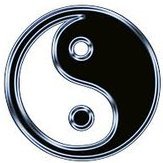Leaderboard
Popular Content
Showing content with the highest reputation on 03/31/19 in all areas
-
Mojave Clover Guide Warning: Follow guide at your own risk, I hold no responsibility if you brick your system or destroy all data during the process. If you're creating the installer from a real Mac, make sure you don't accidentally select the real Mac drive when installing Clover loader. It may cause your Mac to not boot again. You've been warned! New Installation BIOS: Set to Default, apply, then set SATA Operations to AHCI, set Boot List Option to UEFI, Disable Secure Boot Note: By default, upgrading or new Install of Mojave on an SSD drive, it'll automatically convert to APFS format. (1) Create the USB installer via Terminal with "createinstallmedia" (a minimum of 16GB UFD is needed or an external USB drive) sudo /Applications/Install\ macOS\ Mojave.app/Contents/Resources/createinstallmedia --volume /Volumes/"target_USB" --applicationpath /Applications/Install\ macOS\ Mojave.app --nointeraction Note: target_USB = name of the USB drive you're writing to. When done, USB Drive will automatically renamed to "Install MacOS Mojave" (2) Install Clover with following config, add appropriate Bootpack to /EFI/Clover UEFI: Install for UEFI booting only Install Clover in the ESP UEFI Drivers\Recommended Drivers ApfsDriverLoader AptioMemoryFix AudioDxe DataHubDxe FSInject HFSPlus SMCHelper (leave off if you have VirtualSMC.kext in bootpack) Additional drivers PartitionDxe Themes (Optional) (3) Boot with the USB installer, start Disk Utility and initialize your SSD as an APFS drive, name it "Mojave". You can partition drive now if preferred. Close Disk Utility, select Install MacOS. (4) System will auto reboot after files has been copied (5) Boot with USB installer, select "Boot macOS Install from Mojave". Installation will continue installing and reboot (Might have to do this rebooting a couple of times) (6) Boot with USB installer, finish the customization (7) Follow post install steps from Post # 1 Upgrading to Mojave Before upgrading, do the following: (1) Update to latest Clover (2) Upgrade kexts you're currently using found under /EFI/CLOVER/kexts/Other/ and kexts you have installed to /L/E or /S/L/E Common links for new kexts: https://github.com/vit9696/Lilu/releases https://github.com/vit9696/Lilu/blob/master/KnownPlugins.md https://bitbucket.org/RehabMan/ (3) Make sure it's still bootable with the above 2 updates (4) Follow this guide to update Config file and generate USBPort kext Note: Mojave, Lilu + WhateverGreen You cannot use the Clover's KextsToPatch for framebuffer patching in Mojave for Skylake and above MacOS 10.14.1+ does not work with the USB port limit patch, so best to create the USBPort kext in HS Some Mojave bootpack links: E7x70 (Skylake), might work on similar Skylake systems with some tweaks https://osxlatitude.com/forums/topic/9179-dell-latitude-e7x70-clover-uefi-only/?do=findComment&comment=86790 E7x50 (Broadwell), might work on similar Broadwell system with some tweaks https://osxlatitude.com/forums/topic/8514-dell-latitude-e7450-clover-uefi-only/?do=findComment&comment=86791 E7x40 (Haswell), might work on similar Haswell system with some tweaks https://osxlatitude.com/forums/topic/6472-dell-latitude-e7240e7440/?do=findComment&comment=86943 /!\ When posting for HELP, please include full system specs and attach debug files. If you're not able to start the installer, then attach the Clover folder and include screenshot(s) of the error / KP by booting with verbose + debug 0x100 mode1 point
-
Mojave Mojave Guide Bootpacks - HD5500 Only Add this to /EFI/Clover replacing the old Exx50_Mojave.zip FYI, kexts in bootpack is outdated Make sure to 1st upgrade kexts found under /EFI/CLOVER/kexts/Other if you encounter issue Common links for new kexts: https://github.com/vit9696/Lilu/releases https://github.com/vit9696/Lilu/blob/master/KnownPlugins.md https://bitbucket.org/RehabMan/ - For Discrete Model Also add this to /EFI/Clover/ACPI/Patched SSDT-Disable-DGPU.aml.zip Follow Post Install above under Sierra Guide UPDATES1 point
-
- First create 2 partitions Extended Journal when installing OS X. Make sure to jot down the size so you won't wipe out the wrong partition when you install Windows on it later. Hint: don't make both the same size - Use Disk Utility to prepare a Mac OS X Extended partitions (don’t ever use Fat32, Disk Utility will mess up your drive) - After installing OS X, everything all setup. Then install Windows - Create a FAT32 usb drive, extract Windows 10 64-bit iso there (done on a Windows system) - Boot to Win10 usb drive, select custom install, locate the partition that is not OS X, delete it. Then select it (unallocated space) format it to NTFS, install Windows there. - Windows will automatically boots back to Windows. Install all drivers...etc. - Now to fix the boot option - Go to BIOS, create boot option. Browse to /EFI/Clover/Cloverx64.efi, give it a Name. Now move the Clover boot entry to top. - Save and reboot. Now you'll see the option to boot Windows or OS X from the Clover GUI. To fix the time in Windows, launch regedit navigate to [HKEY_LOCAL_MACHINE\SYSTEM\CurrentControlSet\Control\TimeZoneInformation] create a DWORD (32 bit) value, name it RealTimeIsUniversal. Set the value to 1. Exit Boot to OSX, then reboot to Windows. You should see time is correctly sync'd up.1 point

